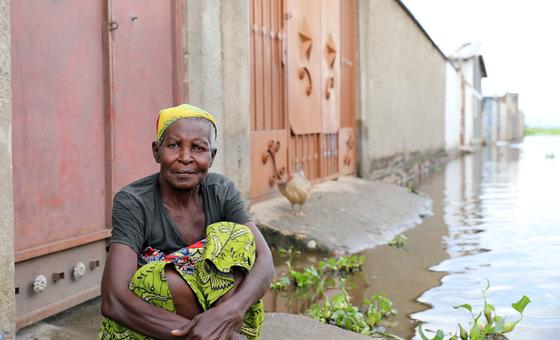Torrential rains could worsen with the arrival of Tropical Cyclone Hidaya, the World Meteorological Organization (WMO) warned on Friday.
Prepare for impact
The tropical cyclone is the first of its kind to develop in eastern Africa and is due to have a “very big impact”, WMO spokesperson Clare Nullis told journalists in Geneva.
She said Tanzania was expected to suffer in particular because the ground is already waterlogged and “is about to get hit by even more rainfall” from the storm.
Kenya is also on high alert after a dam burst its banks on Monday, killing at least 45 people.
Concern for refugees
Separately, the UN refugee agency, UNHCR, expressed particular concern about thousands of refugees and other displaced people across East Africa who have been uprooted once again after their homes were washed away.
In Kenya, nearly 20,000 people in the Dadaab refugee camps – home to more than 380,000 people – have been displaced due to rising water levels. Many of them are among those who arrived in the past couple of years after fleeing severe drought in neighbouring Somalia.
Some 4,000 residents are currently sheltering in six schools with facilities that have been extensively damaged. Others are staying with friends or relatives elsewhere in the camp, where several latrines have collapsed, putting refugees at risk of deadly water-borne diseases.
Forced to relocate
Meanwhile in Burundi, around 32,000 refugees – roughly half of the refugee population in the country – are living in flood-affected areas, and 500 require urgent assistance. Refugee families in the capital, Bujumbura, have had to relocate multiple times due to rising water levels.
UNHCR said access to food and other necessities is increasingly difficult as prices have spiked due to high fees to use canoes to move goods. Education has ground to a halt as classrooms are flooded and learning materials destroyed.
Beyond Bujumbura, rent prices have reportedly doubled, making it too expensive for many refugee families to relocate. Among the badly affected areas is Nyanza Lac commune in Makamba province, where 25,000 Burundian refugees returning home from exile in recent years have settled.
Fleeing flash floods
Other East African countries where displaced people are among the hardest hit by the rains include Somalia. Over 46,000 internally displaced persons in five locations in the south have been forced to relocate due to flash floods.
In Tanzania, over 200,000 refugees mainly from the Democratic Republic of the Congo and Burundi hosted in two camps have been impacted. Shelters within the camps have been damaged, affecting some 200 families.

Deputy President Rigathi Gachagua (Left) accompanied by UN Kenya delegation led by the Resident Coordinator Dr. Stephen Jackson (Right) and UNHCR Officials, today distributed essential aid to families affected by the recent floods in Kiamaiko, Mathare, Nairobi County.
Working across the region
Across East Africa, UNHCR is working closely with local authorities and partners, rushing crucial aid and providing protection services to refugees and affected communities living nearby.
The agency is providing refugees in Kenya with tarpaulins, mosquito nets, soap, jerricans and other relief items, with special attention to older persons and people with disabilities. Families are also being helped to relocate to safer areas.
UNHCR’s activities are part of the wider response to the crisis in Kenya, where the UN and partners have reached some 125,000 people so far. The UN Resident Coordinator in the country, Stephen Jackson, said overall support includes shelter, food, medicine and cash in addition to blankets and mosquito nets.
“I think the concern is more rain is coming, and so we know the needs are going to deepen before they get better,” he told UN News.
In Burundi, UNHCR will provide shelter kits and cash assistance to support refugees as part of an interagency response led by the government. Thousands of former Burundian refugees who have returned home are among those prioritised for support.
Teams in Tanzania are working with local partners to rehabilitate refugee shelters, while in Somalia, critical protection assistance and essential items are being delivered to internally displaced families.
Building climate resilience
UNHCR said climate change is making many parts of the world increasingly unhabitable, especially fragile regions like East Africa and the Horn of Africa, and the floods reveal gaps in preparedness and early action.
“Funding available to address the impacts of climate change is not reaching those forcibly displaced nor the communities hosting them. Without help to prepare for, withstand and recover from climate-related shocks, they face an increased risk of further displacement,” the agency said.
Last month, UNHCR launched its first-ever Climate Resilience Fund to protect refugees and displaced people from climate shocks. The aim is to raise $100 million by the end of 2025.
Contributions will support initiatives such as providing more clean energy to power the water, schools and health infrastructure used by refugees and host communities.

